Apple Vision Pro -- What came before, what will come after, and when
It's not hard to see the future of what the Apple Vision Pro started. Here's what's been said so far, and what we think is going to happen -- and when.
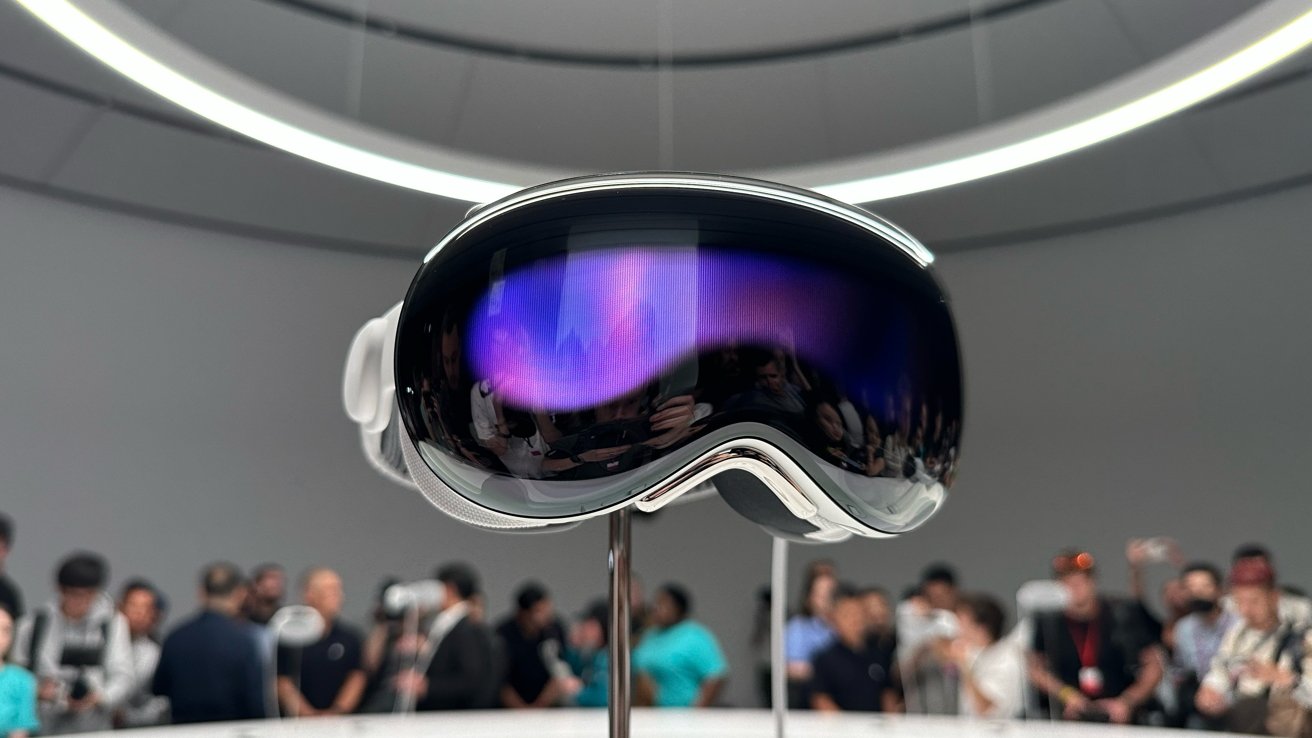
Apple Vision Pro
Apple announced the Apple Vision Pro headset at WWDC, after three years of rumors and buildup about what to expect. There were early rumors like Apple Glass that suggested that Apple was working on digital Wayfarers.
And, there was a very good leak about it in 2022 that detailed the general form factor of the device. It was amazingly close, as rumors go.
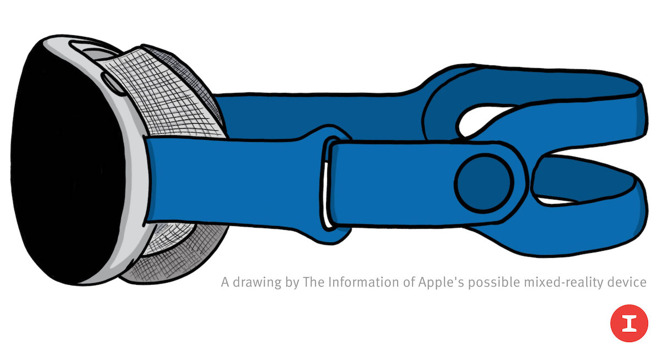
Credit: The Information
And, of course, the renders started. Some were close, some weren't.
But that's okay. That's the nature of the rumor game.
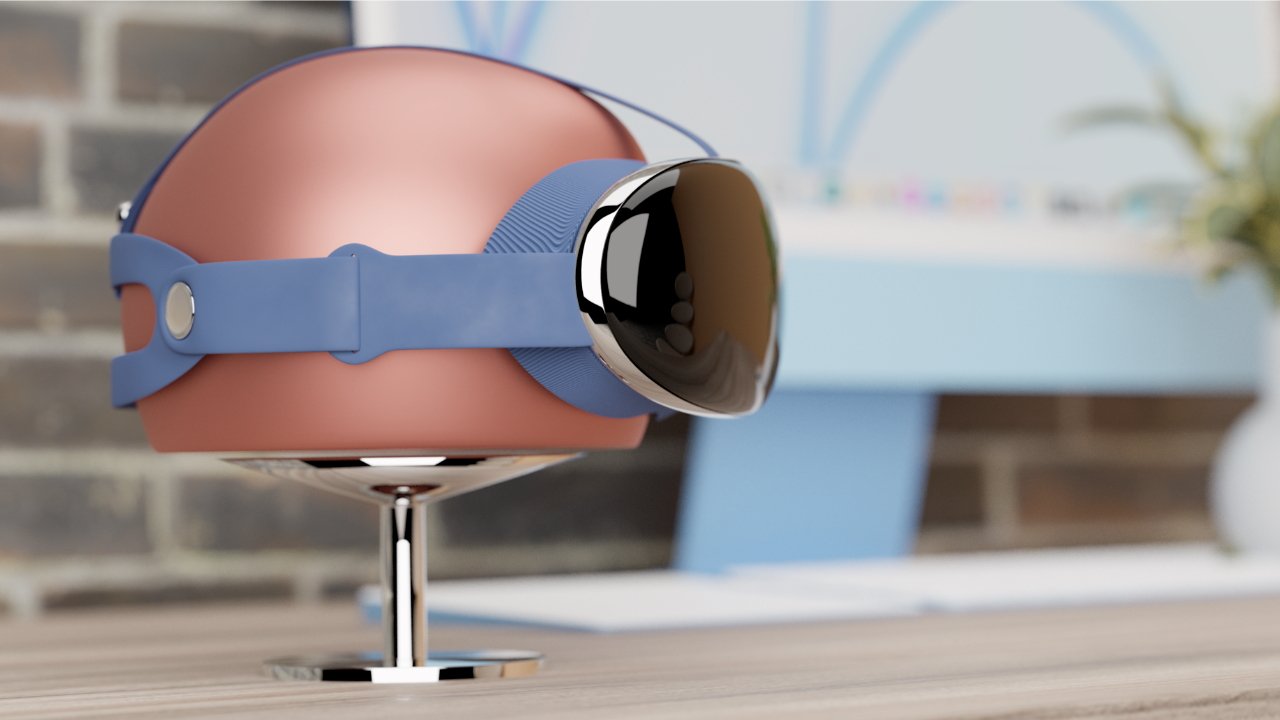
AppleInsider render built from Apple Vision Pro rumors
We're in a strange point where we think that most of the rumors surrounding Apple Vision and Apple Glass are true, in parallel.
Apple has the money and resources to do more than one thing at a time
The Apple Vision Pro was said to be called "surfboard" as a code-name internally. The rumors along the way said that Apple was working on not just "surfboard" but another product called "starboard" as well.
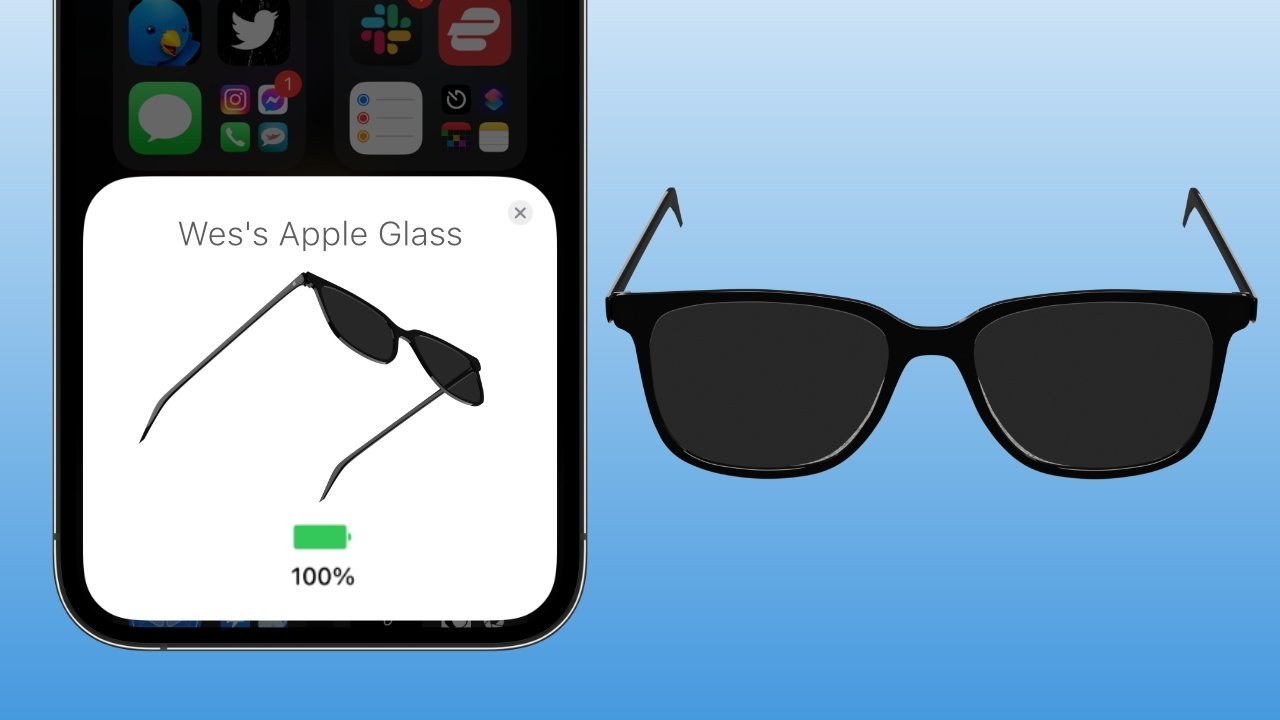
What the rumor mill is guessing 'Apple Glass' will look like
Apple itself has always seen the long game, and can work and refactor products for the future. The premature Newton ultimately spawned the iPhone albeit in a rambling route from here to there. The iPhone clearly and directly begat the iPad and the App Store. The App Store feeds the economic engine that is Apple.
The iPhone, ARKit, and Apple's decade-long work on Spatial Audio led directly to the tech in Apple Vision Pro.
It's also not hard to draw a line from Apple Vision Pro to the Apple Car. CarPlay was just the start of Apple's ambitions in the sector.
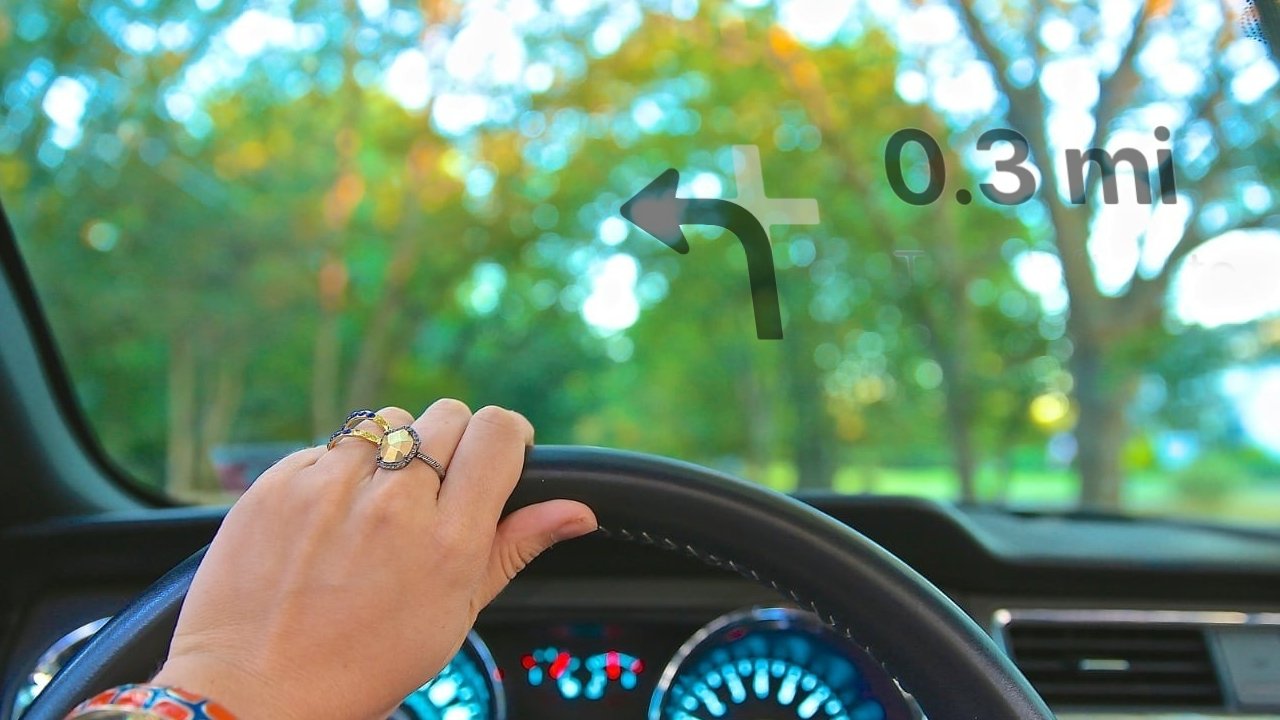
"Apple Car" windscreen could display a great deal of information directly where the driver is looking
There have been so many patents published over the last decade about how Apple intends on using AR to enhance the car experience.
Apple Vision Pro is a start, and is clearly not for everyone
As much as we hate to say it, we see the Apple Vision Pro as a developer's kit that will ultimately be available at retail -- and it won't be for everybody. That $3499 starting price makes it obvious enough that it isn't yet for Ma and Pa America, yet.
It is intended at launch, as an aspirational product, bringing all the technologies Apple can muster in 2023 to bear, in a single product.
And, it will use that aspirational product to convince a wide consumer base, loaded with non-techies, that they want to be involved and buy in like they have for the iPhone. This is something that the other headset manufacturers have failed to do, so far.
There is some evidence that it is already shifting consumer mindset. If the tools that monitor search trends can be believed, there has been a four-fold increase in Google searches for terms surrounding augmented reality and virtual reality since WWDC.
And, that increase in search traffic for related terms has been linear since then. We'll see where it plateaus with the fullness of time. Apple's impact on the number of people searching for information on the topic is unmistakable, though.
Technology marches on, and so will Apple Vision
Apple didn't stop development on AR hardware when it debuted the Apple Vision Pro. The next steps are smaller, faster, less expensive, and in parallel, better.
To that end, Apple uses "Pro" for a reason. Contrary to public opinion at times, it does not mean that you need this particular Pro-labeled product to make money. All it means is "this is the high end."
Every Pro product has been the higher end of what Apple could churn out for that particular product line.
Regardless that the Apple Vision Pro is the first of its name, we think that "Pro" means the same here. We think that Apple Vision Pro will be followed up by Apple Vision not-pro, and perhaps an Apple Vision Air at some point in the future, if the branding follows through.
Apple is almost never first, and Apple Vision Pro is no exception
Ignoring that Apple Vision Pro is a herald of other things to come, it is a short-term warning shot to other headset manufacturers, the same way that the iPhone was that shot to BlackBerry. It is the same as the iPad was to Microsoft's tablet initiative that had been going on for five years in 2010.
If the rumor mill is correct, we're guessing 2025 for the "starboard" project. We suspect that this is the "Apple Glass" Wayfarers-like product that has been swirling in the rumor well since nearly the beginning.
The software will only get better. Apple will migrate all of its own apps. It will do it slowly at first to figure out what gets traction, but they will all come to the platform, eventually.
And, independent developers will get their say. Ultimately, the killer app will be developed by somebody hammering away now on their keyboard with the API that was just released
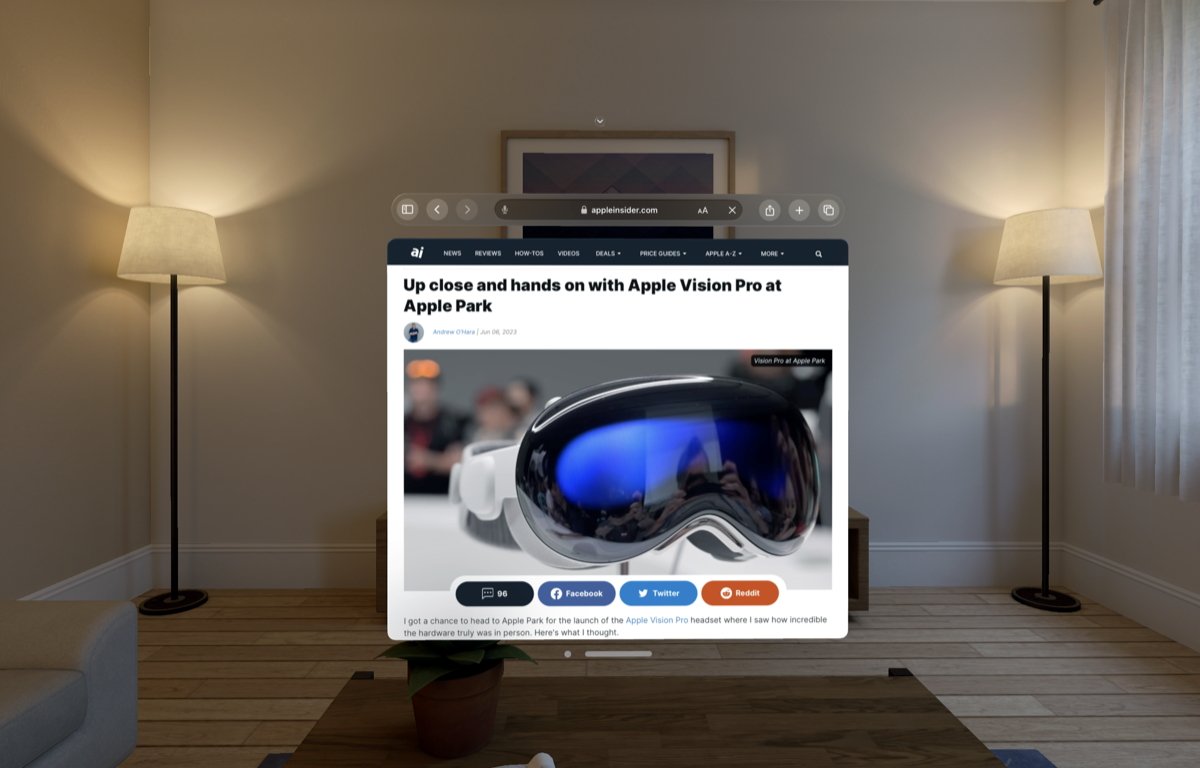
Safari running in windowed mode in visionOS is just the start
.
Early Apple Vision pro software will be rough, like it was on the iPhone when developers got their crack at it. By the time the iPad came out, though, developers and Apple figured out what made a good app.
By the time the Apple Vision non-pro ships in 2025 or so, we expect the same refinement to have already happened.
We're excited to see what those developers bring. Apple probably is too.
As the old saying goes, you need to walk before you can run. Apple has launched into a market letting others walk, so it can run in 2024 when the hardware ships in volume to consumers.
And in around 2025, it will be sprinting, fueled by the developer community that got its first real glance at what the platform is capable of in its infant form on Wednesday.
Read on AppleInsider


Comments
This Starboard project is a miniaturization of the HoloLens into an eyeglasses form factor, right? So there needs to be a semi transparent lens that both lets light through it and be able show AR objects through them? Or will it be a VisionPro in an eyeglasses form factor?
2024 Mar: Vision Pro 1 ships
2025 Oct: Vision Pro 2 and Vision 1 ships with M3 and R2 (this is late in the M3 cycle)
2026 Oct: Vision Pro 3 and Vision 2 ships with M4 and R3 (this is early in the M4 cycle)
This timeline gives them 2 years to get the microOLED supply chain sorted out. It's probably the one thing that prevents them from even contemplating a lower price for awhile. It's still possible for them to do a Vision Pro 2 in October of 2024 imo. M3/R2 chips would be available, they just need to get the microOLED supply chain in order, but rumors make this sound unlikely.
I think the cheaper non-Pro Vision product has all the same features as the 2024 Vision Pro: all the cameras, the microOLEDs. Mass production will drive the cost of components down to get to $1500 to $2000. The Vision Pro models will have more capable cameras, more sensors, more RAM, more storage, etc. I'm curious if they will add say cameras that can have 10x optical zoom, LiDAR with 5x to 10x the range, or crazy things like IR/UV cameras. A 5G modem will hopefully be an option.
It seems that the "wearable" part of the hardware still needs a lot of work. The light seal needs to both prevent light from leaking in and be comfortable (weight, breathability). Two opposing things. I think for the first models it really needs to have top strap going from the forehead to the back-strap to at least reduce the weight on the wearer's cheek bones. The light seal also has to be both pliant enough to be comfortable and stiff enough so that the displays are always a certain location in front the eyes. Seems inevitable that any "Made-for-Vision" light seals and straps will have to pass Apple's requirements for this.
The later models will presumably be lighter, making it easier to wear.
Once they do come up with a solution for this though, that’s when the Vision will get really interesting, like the iPhone was a transformative leap forward in personal computing, enabling many more use cases when compared to the Mac.